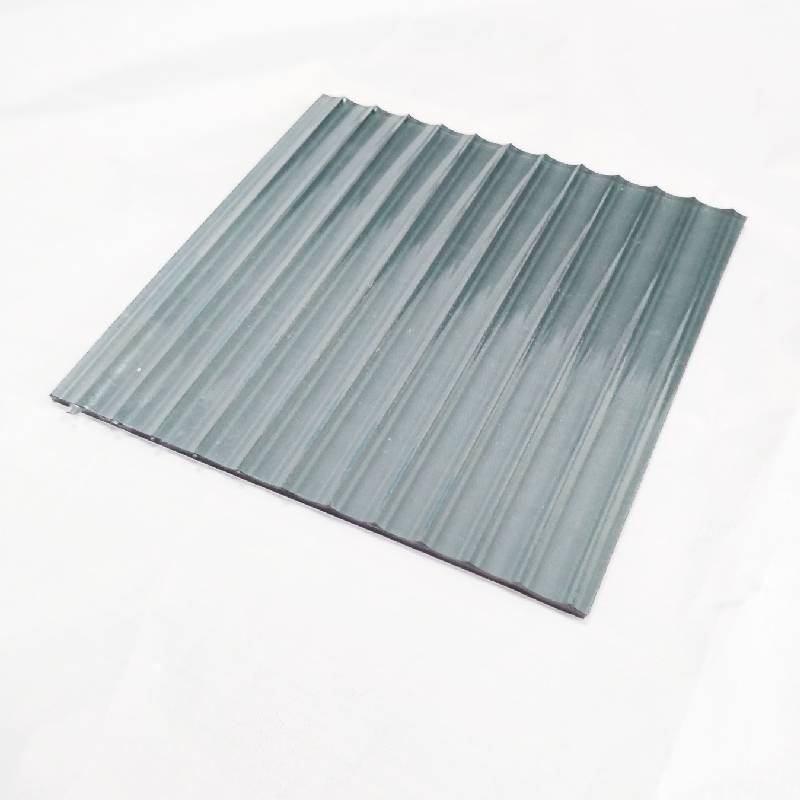Understanding Different Types of Tempered Glass
Tempered glass, also known as toughened glass, is a safety glass manufactured through a process of extreme heating and rapid cooling. This process increases its strength compared to standard glass and allows it to withstand various environmental stresses. This article explores the different types of tempered glass, their applications, and their benefits.
1. The Manufacturing Process of Tempered Glass
To understand the different types of tempered glass, it is essential to comprehend its manufacturing process. Initially, the glass is cut to the desired shape and size. Following this, it undergoes a heating phase where it is heated to approximately 620 degrees Celsius (about 1,148 degrees Fahrenheit). This high temperature is crucial as it alters the molecular structure of the glass, making it more robust. The glass is then rapidly cooled, a process known as quenching, which creates internal stresses that contribute to its strength.
2. Types of Tempered Glass
Tempered glass comes in various types based on its applications and the requirements of the end-user. The main categories include
- Clear Tempered Glass This is the most common type, featuring a clear, transparent finish. It is widely used in residential and commercial buildings for windows, doors, and shower enclosures. Its visual clarity and strength make it an attractive option.
- Tinted Tempered Glass This type of tempered glass has a colored film that reduces glare and solar heat gain. It is popular in buildings where controlling the amount of light is essential, such as offices and homes in sunny locations.
- Low-E Tempered Glass Low emissivity (Low-E) tempered glass has a special coating that reflects heat while allowing natural light to pass through. This energy-efficient option is ideal for windows in energy-efficient buildings, helping to reduce heating and cooling costs.
- Laminated Tempered Glass This type combines two or more layers of tempered glass with an interlayer, usually made of PVB (polyvinyl butyral), which adds additional safety and sound insulation. Laminated tempered glass is often used in automotive windshields and overhead glazing.
- Patterned Tempered Glass Featuring decorative patterns etched or pressed into the surface, this type of glass offers privacy while still allowing natural light. It's commonly used for bathroom windows and commercial buildings.
3. Applications of Tempered Glass
The versatility of tempered glass is evident in its numerous applications across various industries
different tempered glass
- Construction Used in facades, windows, and doors, tempered glass enhances the aesthetic appeal and safety of commercial and residential buildings.
- Automotive Windshields and side windows in vehicles are often made of tempered glass due to its strength and safety features, which prevent shattering upon impact
.
- Furniture Tempered glass is frequently used in tables and shelves, providing durability and a modern look.
- Appliances Many kitchen appliances, like ovens and microwaves, utilize tempered glass to withstand high temperatures while still being safe for everyday use.
4. Advantages of Using Tempered Glass
The benefits of tempered glass are substantial, making it a preferred choice in various applications
- Safety In the event of breaking, tempered glass shatters into small, blunt pieces rather than sharp shards, minimizing the risk of injury.
- Strength Tempered glass is up to five times stronger than regular glass of the same thickness, making it ideal for high-stress environments.
- Heat Resistance It can withstand extreme temperature fluctuations, making it suitable for environments exposed to heat, such as kitchens and industrial settings.
- Aesthetic Appeal With various finishes and options available, tempered glass can enhance the visual appeal of any space while providing functionality.
Conclusion
In summary, different types of tempered glass serve diverse purposes across numerous industries due to their strength, safety, and aesthetic value. Whether used in construction, automotive, or everyday furniture and appliances, tempered glass continues to be an essential component in modern design and engineering. Understanding its various types and applications can help consumers make informed choices that ensure safety and durability in their projects and purchases.
 Afrikaans
Afrikaans  Albanian
Albanian  Amharic
Amharic  Arabic
Arabic  Armenian
Armenian  Azerbaijani
Azerbaijani  Basque
Basque  Belarusian
Belarusian  Bengali
Bengali  Bosnian
Bosnian  Bulgarian
Bulgarian  Catalan
Catalan  Cebuano
Cebuano  Corsican
Corsican  Croatian
Croatian  Czech
Czech  Danish
Danish  Dutch
Dutch  English
English  Esperanto
Esperanto  Estonian
Estonian  Finnish
Finnish  French
French  Frisian
Frisian  Galician
Galician  Georgian
Georgian  German
German  Greek
Greek  Gujarati
Gujarati  Haitian Creole
Haitian Creole  hausa
hausa  hawaiian
hawaiian  Hebrew
Hebrew  Hindi
Hindi  Miao
Miao  Hungarian
Hungarian  Icelandic
Icelandic  igbo
igbo  Indonesian
Indonesian  irish
irish  Italian
Italian  Japanese
Japanese  Javanese
Javanese  Kannada
Kannada  kazakh
kazakh  Khmer
Khmer  Rwandese
Rwandese  Korean
Korean  Kurdish
Kurdish  Kyrgyz
Kyrgyz  Lao
Lao  Latin
Latin  Latvian
Latvian  Lithuanian
Lithuanian  Luxembourgish
Luxembourgish  Macedonian
Macedonian  Malgashi
Malgashi  Malay
Malay  Malayalam
Malayalam  Maltese
Maltese  Maori
Maori  Marathi
Marathi  Mongolian
Mongolian  Myanmar
Myanmar  Nepali
Nepali  Norwegian
Norwegian  Norwegian
Norwegian  Occitan
Occitan  Pashto
Pashto  Persian
Persian  Polish
Polish  Portuguese
Portuguese  Punjabi
Punjabi  Romanian
Romanian  Russian
Russian  Samoan
Samoan  Scottish Gaelic
Scottish Gaelic  Serbian
Serbian  Sesotho
Sesotho  Shona
Shona  Sindhi
Sindhi  Sinhala
Sinhala  Slovak
Slovak  Slovenian
Slovenian  Somali
Somali  Spanish
Spanish  Sundanese
Sundanese  Swahili
Swahili  Swedish
Swedish  Tagalog
Tagalog  Tajik
Tajik  Tamil
Tamil  Tatar
Tatar  Telugu
Telugu  Thai
Thai  Turkish
Turkish  Turkmen
Turkmen  Ukrainian
Ukrainian  Urdu
Urdu  Uighur
Uighur  Uzbek
Uzbek  Vietnamese
Vietnamese  Welsh
Welsh  Bantu
Bantu  Yiddish
Yiddish  Yoruba
Yoruba  Zulu
Zulu 

